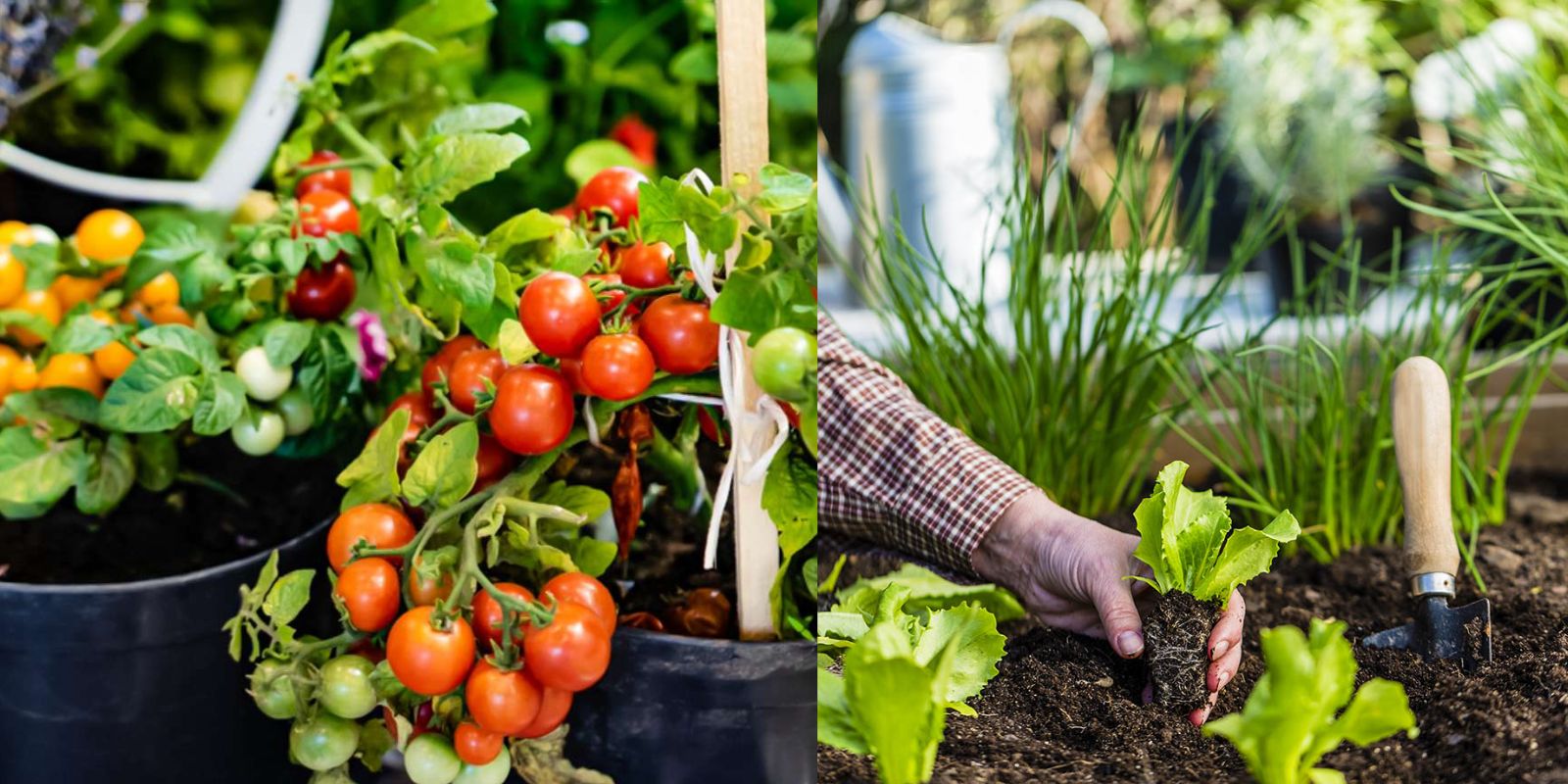Transforming a compact area into a thriving vegetable garden may seem like a daunting task, but with the right approach, it’s entirely achievable. Whether you have a small balcony, a tiny backyard, or just a limited outdoor space, you can enjoy homegrown vegetables by using creative and space-efficient gardening techniques. This guide will walk you through essential steps for growing vegetables in small spaces, ensuring you make the most out of every inch.
1. Choose Space-Efficient Plants
Selecting the Right Vegetables:
When gardening in small spaces, choosing the right plants is crucial for success. Opt for varieties that are well-suited to container life or small garden beds. Here are some excellent choices:
- Leafy Greens: Lettuce, spinach, and Swiss chard are perfect for small spaces as they have compact growth habits and can be harvested multiple times.
- Root Vegetables: Radishes, carrots, and beets are ideal because they grow downward rather than outward, requiring less horizontal space.
- Herbs: Basil, cilantro, and parsley thrive in containers and can be grown indoors or outdoors.
- Compact Varieties: Look for dwarf or bush varieties of vegetables such as cherry tomatoes, bush beans, and compact cucumbers. These plants are bred to grow in smaller spaces.
Planting Tips:
- Read Labels: Check seed or plant labels to ensure they are suitable for small-space gardening. Look for terms like “compact,” “dwarf,” or “bushy” on seed packets.
- Harvest Early: Choose vegetables that mature quickly. This allows you to grow multiple crops in a single season.
2. Use Containers
Maximizing Vertical and Horizontal Space:
Containers are a versatile solution for small-space gardening. They allow you to grow vegetables without needing a traditional garden bed. Consider the following tips:
- Select Suitable Containers: Use pots, buckets, and hanging baskets that are large enough to accommodate the root systems of your chosen vegetables. Ensure containers have adequate drainage holes to prevent waterlogging.
- Container Materials: Opt for materials like plastic, ceramic, or fabric pots. Fabric pots are particularly beneficial for root vegetables as they promote healthy root development.
- Stackable and Modular Designs: Use stackable pots or modular systems that can be easily rearranged or expanded as needed.
Planting Tips:
- Mix and Match: Combine different plants in a single container. For example, you can grow herbs and lettuce together or plant radishes alongside carrots.
- Watering Needs: Containers may require more frequent watering than garden beds. Ensure your plants receive consistent moisture and check containers daily.
3. Implement Vertical Gardening
Utilizing Vertical Space:
Vertical gardening is an excellent way to maximize space and create a lush, green environment in a small area. Here’s how to effectively use vertical gardening techniques:
- Trellises and Arbors: Install trellises against walls or fences to support climbing plants like beans, cucumbers, and tomatoes. Arbors can also add aesthetic appeal while providing support for vertical growers.
- Wall-Mounted Planters: Use wall-mounted planters or pockets to grow herbs, salad greens, and small vegetables. These planters can be attached to fences, walls, or even the sides of buildings.
- Hanging Baskets: Hang baskets from hooks or railings to grow trailing plants like strawberries or herbs. Hanging baskets also save ground space and add visual interest.
Planting Tips:
- Choose Climbing Plants: Select plants that naturally climb or vine, such as peas, beans, and certain squash varieties. Ensure they have sufficient support as they grow.
- Rotate Crops: Change the location of your vertical planters periodically to prevent soil depletion and disease buildup.
4. Practice Succession Planting
Maximizing Harvests:
Succession planting is a technique where you plant crops in stages to ensure a continuous harvest. This approach is especially useful in small gardens where space is limited:
- Staggered Planting: Sow seeds or transplant seedlings at regular intervals. For example, plant lettuce every two weeks to enjoy a steady supply of fresh greens.
- Follow-Up Crops: After harvesting one crop, immediately plant another. For instance, after harvesting radishes, plant beans or carrots in the same space.
- Seasonal Planning: Plan for seasonal changes by planting cool-season crops in early spring and late summer or fall crops in late summer. This allows you to make the most of the growing season.
Planting Tips:
- Keep Records: Maintain a planting calendar or journal to track what you’ve planted and when. This will help you manage your garden efficiently and ensure timely planting and harvesting.
- Optimize Space: Use small gaps in your garden for quick-growing crops like radishes or leafy greens.
5. Optimize Light Exposure
Ensuring Adequate Sunlight:
Light is a crucial factor in successful vegetable gardening. In small spaces, it’s important to maximize light exposure for healthy plant growth:
- Assess Light Conditions: Determine how much sunlight your space receives and adjust your plant placement accordingly. Most vegetables require at least 6-8 hours of sunlight per day.
- Use Reflective Surfaces: Place reflective surfaces like white boards or mirrors to increase light exposure on plants. This can be particularly useful in shaded areas.
- Consider Grow Lights: If natural light is limited, use grow lights to supplement daylight. LED or fluorescent grow lights can provide the necessary spectrum for healthy plant growth.
Planting Tips:
- Rotate Plants: Move containers or planters to different locations to ensure all plants receive adequate sunlight.
- Adjust Light Intensity: Use adjustable grow lights to control the light intensity and duration according to your plants’ needs.
Conclusion: Cultivate Your Green Space
Growing vegetables in small spaces requires creativity and careful planning, but the rewards are well worth the effort. By choosing space-efficient plants, utilizing containers, implementing vertical gardening techniques, practicing succession planting, and optimizing light exposure, you can create a thriving vegetable garden in even the smallest of areas. Embrace the challenge, and watch your compact garden flourish with fresh, homegrown produce. Happy gardening! 🌿

